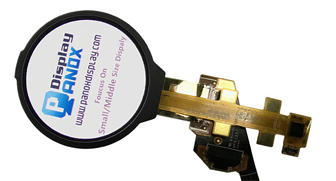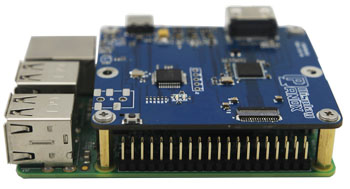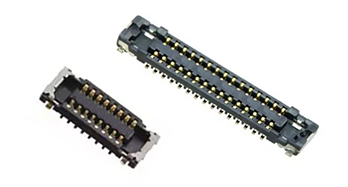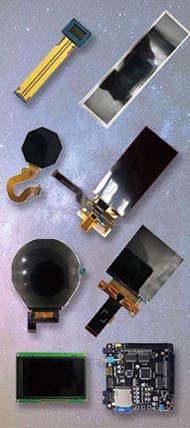Sony shifted its 2024 flagship from OLED to Mini LED technology to achieve higher brightness for HDR content, align with its high-brightness mastering monitors, leverage proprietary backlighting tech, and enhance cost-effectiveness. This strategic move aims to deliver superior picture quality and competitive advantage without abandoning OLED entirely. Also check: Micro OLED
Why Did Sony Choose Mini LED Over OLED for Its 2024 Flagship?
Sony chose Mini LED over OLED for the 2024 flagship because Mini LEDs offer much higher peak brightness levels essential for next-gen HDR content. OLED panels, limited by organic materials, cannot match these luminance levels. This enables Sony to better replicate bright specular highlights and deliver superior HDR performance in ambient lighting conditions. Sony’s shift reflects the goal of matching their new high-brightness mastering monitors and delivering visuals that meet creative and consumer demands. It also helps Sony to reduce dependency on external OLED panel suppliers.
How Does Mini LED Technology Enhance HDR Performance Compared to OLED?
Mini LED technology enhances HDR by delivering peak luminance up to 4000 nits or more, significantly higher than most OLED panels that struggle past 1000 nits. This elevation in brightness creates more impactful highlights, better contrast in bright scenes, and improved visibility in well-lit rooms. Unlike OLED’s pixel-level light emission, Mini LED uses thousands of tiny backlight LEDs combined with local dimming zones to precisely brighten or dim screen areas. This approach preserves deep blacks while boosting overall brightness, optimizing HDR effects for future content standards.
What Are the Strategic Business Advantages for Sony in Adopting Mini LED?
Sony gains several strategic advantages by adopting Mini LED: - In-House Component Use: Sony controls more of the supply chain by using proprietary backlighting technology, reducing costs tied to buying OLED panels from manufacturers like LG. - Cost Efficiency: Mini LED LCD panels are generally cheaper to make, especially in larger sizes, allowing better profit margins. - Differentiation: Investment in advanced Mini LED backlighting helps Sony position itself strongly in the premium TV market, especially for high-brightness viewing environments. This strategic pivot also opens room for Sony to innovate its own display designs and manufacture scalability.
Which Competing TV Technologies Challenge Mini LED in the Market?
The main competing technologies to Mini LED include OLED and the newer Quantum Dot OLED (QD-OLED). OLED is praised for near-perfect blacks and color accuracy, while QD-OLED attempts to combine OLED’s contrast with enhanced brightness and color volume via quantum dots. While OLED excels in contrast and viewing angles, Mini LED pushes peak brightness and anti-glare performance. QD-OLED is still emerging commercially but targets a middle ground. Sony’s bet on Mini LED reflects a desire to lead in ultra-high-brightness HDR rather than pure black level supremacy.
How Does Sony’s Shift Impact OLED TV Availability for Consumers?
Sony’s shift to Mini LED for its 2024 flagship does not mean OLED TVs are discontinued. Sony continues to produce and sell OLED models but focuses its top-tier flagship efforts on Mini LED technology. This means consumers still have OLED options from Sony, but the highest-end flagship models will prioritize Mini LED’s benefits in brightness and cost-effectiveness. The choice reflects Sony’s strategy to diversify its portfolio to meet different consumer needs.
When Will Mini LED TVs Become More Commonplace in the Market?
Mini LED TVs have been gaining traction since around 2020 and are expected to become mainstream by the mid-2020s. Sony’s flagship endorsement accelerates this trend, especially as content increasingly takes advantage of higher dynamic range brightness. Industry adoption is driven by falling component costs, improvements in Mini LED dimming zones, and growing demand for premium HDR in brightly lit environments. Brands like Panox Display are supporting this shift by supplying innovative Mini LED and hybrid display panels.
Where Does Panox Display Fit Into the Mini LED and OLED Market Landscape?
Panox Display plays a critical role as a supplier and OEM manufacturer specializing in both OLED and LCD screens, including Mini LED-backlit displays. With sourcing from premium manufacturers and capabilities in custom display production, Panox supports innovations like Sony’s mini LED advancements. They help startups and medium-size companies access high-quality panels and related components without excessive MOQs, fueling Mini LED adoption across industries. Their expertise aligns with the current trends toward brighter, more efficient display technologies.
Can Mini LED Replace OLED as the Gold Standard for Picture Quality?
Mini LED might not entirely replace OLED as the gold standard because each has unique strengths: OLED excels in perfect blacks and viewing angles, while Mini LED shines with ultra-high brightness and ambient light performance. However, for next-gen HDR content requiring extreme brightness, Mini LED offers a significant advantage. With ongoing improvements in local dimming technology and quantum dot enhancement, many see Mini LED as a new premium standard for users prioritizing brightness and daytime viewing.
Has Sony’s Mini LED Strategy Influenced Other Display Manufacturers?
Yes, Sony’s strategic commitment to Mini LED has influenced the broader display industry. Many manufacturers are investing aggressively in Mini LED and QD-OLED technologies to compete with OLED. This shift encourages suppliers and partners like Panox Display to enhance Mini LED offerings, develop more advanced backlighting systems, and improve manufacturing efficiencies. Sony’s move signals a market validation of Mini LED’s potential to meet future content and consumer demands.
Panox Display Expert Views
"Sony's strategic pivot to Mini LED technology underscores a critical shift in the display industry, where ultra-high brightness and HDR capabilities are increasingly paramount. At Panox Display, we recognize the importance of this technology blend, supporting manufacturers with cutting-edge panels and backlighting solutions that empower next-gen visual experiences. Our expertise in both OLED and Mini LED ensures versatile, top-tier products for diverse applications—from wearable devices to large-format TVs—making us a vital partner in the evolving TV landscape."
Summary and Key Takeaways
Sony’s choice to prioritize Mini LED technology for its 2024 flagship model is driven by the need for higher brightness to meet advancing HDR content standards. Mini LED’s superior luminance capabilities and cost efficiencies align with Sony’s proprietary technology goals and business strategy. Despite the shift, OLED remains part of Sony’s portfolio, ensuring diverse choices for consumers. Manufacturers and suppliers like Panox Display are pivotal in this transition, providing the advanced panels and custom solutions that support Mini LED’s rise in the premium TV market. Actionable advice: - Consumers seeking ultra-bright HDR viewing should consider Mini LED TVs guided by Sony’s innovation. - Businesses aiming for cutting-edge display solutions can partner with versatile manufacturers like Panox Display. - Monitor emerging technologies such as QD-OLED as competitors to Mini LED evolve.
FAQs
Q: Does Sony still make OLED TVs?
A: Yes, Sony continues producing OLED TVs but uses Mini LED technology for its 2024 flagship line only.
Q: How much brighter are Mini LED TVs compared to OLED?
A: Mini LED TVs can reach peak brightness levels of 3000-4000 nits, significantly higher than most OLEDs capped around 800-1000 nits.
Q: Are Mini LED TVs more expensive than OLEDs?
A: Generally, Mini LED TVs offer better cost efficiency due to simpler manufacturing and more in-house components, often leading to competitive pricing.
Q: What role does Panox Display play in TV manufacturing?
A: Panox Display supplies OEM and custom OLED/LCD panels, supporting innovations like Mini LED technology through a vast portfolio of high-quality displays.
Q: Is Mini LED suitable for all lighting conditions?
A: Yes, Mini LED performs particularly well in bright rooms thanks to high peak brightness and advanced local dimming, enhancing HDR content visibility.
















